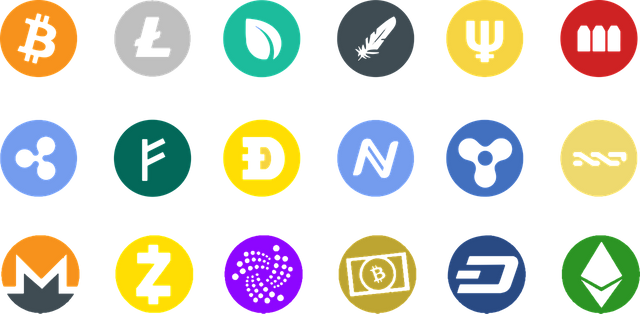Steemit Crypto Academy Contest / S8W2 - What are Stablecoins? / @carlir


Use your own understanding to explain what stablecoins are. And how do they achieve a stable price?


Why were stablecoins created and how are they useful?
Stablecoins were created to address the inherent volatility of cryptocurrencies. Unlike traditional currencies, cryptocurrencies have a highly fluctuating value, making them unappealing to users seeking a stable and predictable means of exchange.
Stablecoins are cryptocurrencies designed to maintain a stable value relative to another currency or asset, such as the US dollar, euro, gold, or other stable assets. To achieve this, stablecoins are backed by a reserve of assets that support their value, giving them a stability and predictability that traditional cryptocurrencies lack. Stablecoins are useful because they allow users to have a more stable and predictable means of exchange than other cryptocurrencies. This makes them useful for users who want to maintain the value of their money without having to worry about fluctuations in the cryptocurrency market. Additionally, stablecoins are also used in cryptocurrency trading as a way to avoid market fluctuations while conducting transactions.

What are the most popular stablecoins? Which one do you use the most and why?
Stablecoins, also known as stablecoins, are cryptocurrencies designed to maintain a stable value, usually by linking them to a fiat currency or some other underlying asset. Some of the most popular stablecoins are:
Tether (USDT): is the largest and most widely used stablecoin. It is pegged to the US dollar at a ratio of 1:1. USD Coin (USDC): is a stablecoin backed by Coinbase and Circle, and is pegged to the US dollar. Dai (DAI): is a decentralized stablecoin linked to the US dollar, but its backing is not in the hands of a single entity. Binance USD (BUSD): is a stablecoin created by Binance and is pegged to the US dollar. TrueUSD (TUSD): is a stablecoin backed by US dollars and regularly audited by third parties. Paxos Standard (PAX): is a stablecoin pegged to the US dollar and backed by the cryptocurrency custodian company Paxos. These are some of the most popular stablecoins, but there are many others in the market that are backed by different fiat currencies and underlying assets. The stablecoin I use the most is Tether (USDT), in fact it's the only one I use. This is because from my early days in the world of cryptocurrencies it was the stablecoin that I personally knew and have been using it ever since.

Can stablecoins lose their stability? If the answer is affirmative, then please cite some cases with an explanation of the reasons for it.
Yes, stablecoins can lose their stability and their value can fluctuate. Stablecoins are designed to maintain a constant value relative to a stable currency, such as the US dollar or the euro. This is achieved by backing the stablecoin with tangible assets, such as fiat money or commodities.
However, there are several reasons why a stablecoin can lose its stability. One reason could be the lack of transparency in the management of the assets backing the stablecoin. If investors do not have confidence in the management of the assets, they may begin to withdraw their funds from the stablecoin, which could lead to a drop in its value. Another reason could be volatility in cryptocurrency markets. Stablecoins are often linked to an underlying cryptocurrency, such as Ethereum or Bitcoin. If the underlying cryptocurrency experiences a drop in value, this can also affect the value of the stablecoin. Additionally, there is also the risk that the stablecoin is not adequately backed. If the stablecoin is backed by assets that do not have real value, such as some stablecoins that are backed by promises of payment, a drop in its value could occur if investors lose confidence in the issuer's ability to fulfill these promises. Yes, there have been some cases where stablecoins have lost their stability and their value has fluctuated. Here are some examples: Tether (USDT): Tether is a stablecoin that is backed by the US dollar. However, there have been concerns about whether Tether actually has enough US dollars to back all of its coin issuances. In 2018, Tether lost its stability when it was rumored that it was not adequately backed and may not have enough assets to cover all of its coin issuances. As a result, the value of Tether temporarily fell below its parity with the US dollar. Basis (BAS): Basis was a stablecoin that was designed to maintain a stable value relative to the US dollar and was backed by a basket of assets. However, in 2018, Basis announced that it would shut down due to regulatory issues. This led to a drop in the value of Basis and ultimately resulted in the removal of the coin. DAI (DAI): DAI is a stablecoin that is backed by a basket of cryptocurrencies. In March 2020, the value of DAI temporarily deviated from its parity with the US dollar due to volatility in cryptocurrency markets. This led to a series of emergency actions by DAI developers to stabilize its value, including the introduction of new security measures and the sale of large amounts of ETH to back the coin. These are just some examples of stablecoins that have lost their stability. It's important to remember that, although stablecoins are designed to be stable, there are still risks associated with their value, and investors should carefully research before investing in them.

What are the advantages and disadvantages of stablecoins compared to traditional cryptocurrencies?
Advantages of stablecoins:
- Stability: Stablecoins are designed to maintain a constant value, making them more stable than traditional cryptocurrencies.
- Reduced volatility: Stablecoins can be a good option for those looking to reduce the volatility of their cryptocurrency investments.
- Transparency: Some stablecoins are backed by underlying assets, providing greater transparency and confidence in their value.
- Greater adoption: Stablecoins may have greater adoption in e-commerce and daily transactions due to their price stability.
Disadvantages of stablecoins:
- Risk of collapse: If the entity issuing the stablecoin is unable to maintain parity with the underlying asset, the stablecoin may collapse.
- Centralized control: Stablecoins are centralized in the hands of the issuing entity, which can pose issues of control and transparency.
- Limited options: Currently, the number of stablecoins in the market is limited compared to the number of traditional cryptocurrencies.

Advantages of traditional cryptocurrencies:
- High volatility: Traditional cryptocurrencies can be very volatile, presenting opportunities for short-term profits.
- Financial freedom: Traditional cryptocurrencies are not regulated by any government or centralized entity, giving users greater financial freedom.
- Widespread adoption: There is widespread adoption of traditional cryptocurrencies in the market.
Disadvantages of traditional cryptocurrencies:
- Instability: Traditional cryptocurrencies can experience significant price volatility, making them riskier for investors.
- Low acceptance: Despite their growing popularity, there is still low acceptance of traditional cryptocurrencies in e-commerce and daily transactions.
- Lack of regulation: The lack of regulation can pose issues of transparency and consumer protection.




Hi @carlir.
Unfortunately, on checking your post at ChatGPT detector, I have seen that there is 96% probability of your post is generated by the ChatGPT tool.
This is your first and last warning. Never repeat this practice again. Otherwise, you will be permanently muted from here. Always, publish your own and unique ideas.
Thank you, friend!


I'm @steem.history, who is steem witness.
Thank you for witnessvoting for me.
please click it!
(Go to https://steemit.com/~witnesses and type fbslo at the bottom of the page)
The weight is reduced because of the lack of Voting Power. If you vote for me as a witness, you can get my little vote.
Great post on stablecoins! You have provided a clear explanation of what stablecoins are and how they achieve their stable price. It's interesting to know that stablecoins were created to address the volatility of cryptocurrencies and to provide users with a more stable means of exchange. Your overview of the most popular stablecoins in the market is helpful, and it's good to hear about your personal experience with Tether (USDT). Your explanation of the reasons why stablecoins can lose their stability is informative, and it highlights the importance of transparency and adequate backing of assets. Overall, a well-written and informative post on an important topic in the world of cryptocurrencies
Hello.
First of all thank you for taking the time to read this article, there is no doubt that stablecoins are essential in the crypto world, as they allow us to protect our assets in some way.
But we must always be cautious in the stablecoin that we are going to use because they can also suffer a considerable drop.
Hello @carlir, I hope you are fine friend,
You have talked about stablecoins in this post. You have explained your understanding on it really well. Also the types of stablecoins like asset-backed, crypto-backed, and non-backed known as algorithm backed stablecoins. I want to add one more type here that is commodities backed stablecoins.
Then you have nicely explained why were stablecoins created. What was the reason they were needed to be designed for the market. And yes high volatility is the reason for it.
USDT is top one stablecoin that most of traders use like you and me. I was using it in the past but now I shifted to BUSD because on Binance, there is no fees for trading in BUSD pair. No fees mean more profit 😜.
Then you explained about is it possible a stablecoin gets unstable and I totally agree that issuers can make them unstable if they have not required amount of reference asset that they got as backing of stablecoin. There are many other reasons also but main one is not required backing asset.
You have then explained nicely the advantages and disadvantages of stablecoins.
Overall, you have done a great work that can be seen in your post. I appreciate for putting your full efforts in research and writing content that is helpful for many like me. I wish you success in this as well as future contests. Thank you :)
Dear friend @carlir,
You have fulfilled all the requirements for this assignment.
The definition you gave of stable coin is nice, it was given based on your understanding.
Yes, stable coin was designed to help create a token that is not vulnerable to the high volatility of the cryptomarket.
I particularly like your approach to the last question, there you listed distinctively the advantages and disadvantages of a stable coin and the traditional currency.
I wish you the very best in this contest
You wrote well friend but from my observation, you didn't do it in a unique manner, so I am not giving you a credit for that.
Stable coins are Lovely asset that are really helpful to the growth of crypto Market and there should not be underestimated.
Thanks for going attempting